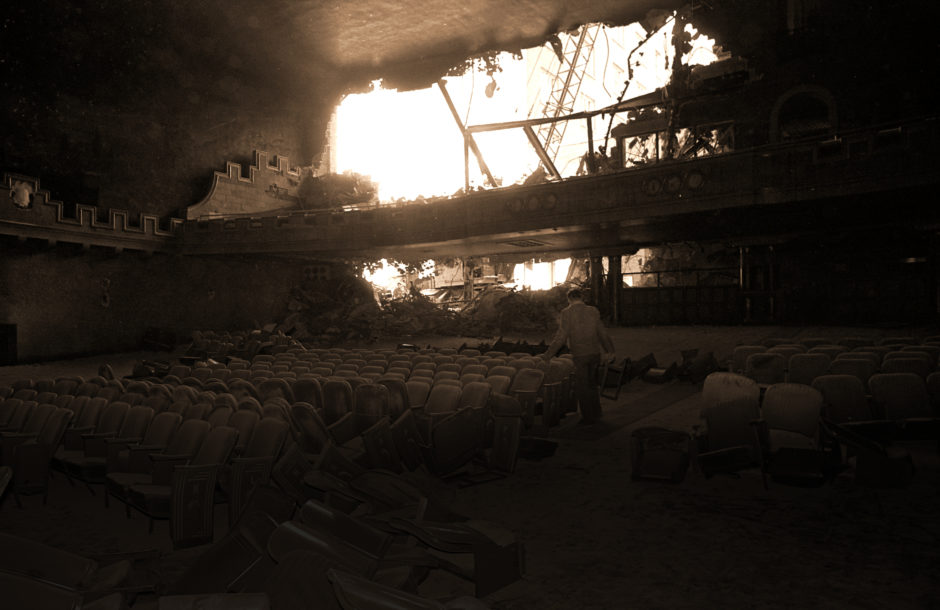May 11, 2019
This is the first act in a three-part story of the life, death and legacy of Saskatoon's Capitol movie theatre. Click here for Part 2 and here for Part 3.
The wrecking crew came in early, under the cover of darkness.
In the downtown alleyway behind the Capitol — Saskatoon’s half-century-old movie palace — orange barricades kept witnesses at bay, while a hired security guard and dog stood watch.
“It was a shame to see a good theatre go like that,” said moviegoer James Taylor. “It was Capitol punishment. Death by wrecking ball.”
The 1979 demolition was the fade to black for a bitter fight that had flickered on and off for a year.
Forty years later, people still miss the theatre and point to it as a dividing line in Saskatoon's heritage history.
Using archival photos, videos, clippings, dozens of testimonials given by people after the demolition, plus new interviews, this is an attempt to tell the full story of the Capitol’s rise and fall, on the 90th anniversary of the theatre’s opening day.

Act One: Glory Days
SASKATOON STARPHOENIX, May 9, 1929: “The Capitol Theatre opens its doors to Saskatoon at noon Saturday — a piece of interior architecture of which the city can be more than proud.”
JAMES TAYLOR (moviegoer): “It was a fantasy land.”
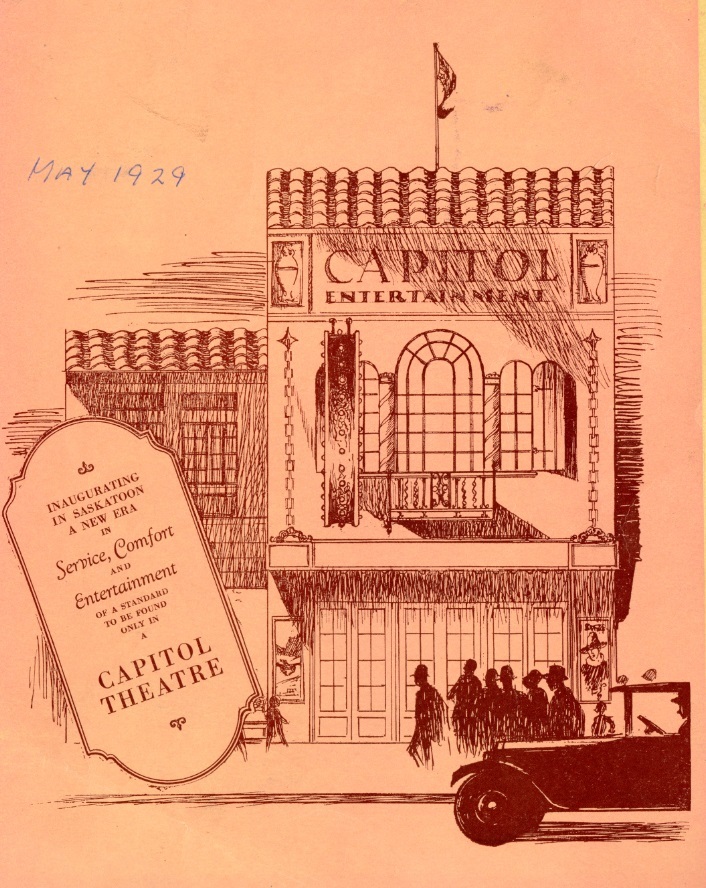
When they opened Saskatoon’s first “all-talking” movie theatre more than 90 years ago, Newt Byers and his partner, Jim Butler, did not scrimp. The two insurance men partnered with Famous Players Canada to build a 1,561-seat palace on Second Avenue — where the Scotia Centre Mall stands today.
The cost? More than $6 million in 2019 dollars.
JACK BYERS (Newt's nephew and Capitol shareholder): I can remember being absolutely thrilled. This was the first talking picture in Saskatoon — Close Harmony.

JACK BYERS: One of the shorts [on opening night] was a fire engine racing down the street with the sirens going. Just to hear the sound, it was fantastic.

The well-attired staff matched the grandeur of the building. Like other “atmospheric” theatres of its day, the Capitol was designed to wow visitors as much as the movies it showed. Not that the narrow front facade gave much idea of the theatre’s indoor scope and splendour.
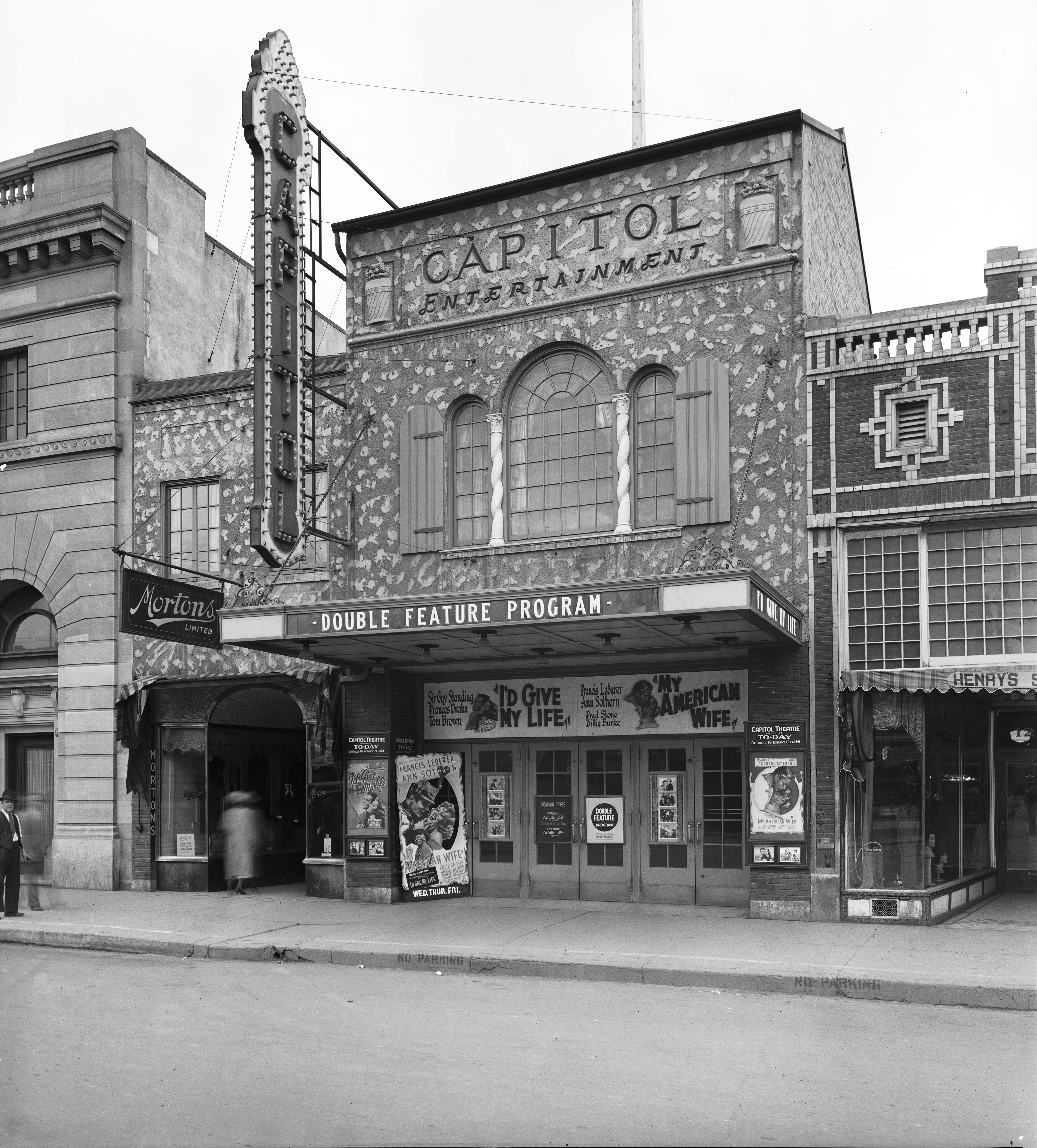
BILL SARJEANT (preservationist): The exterior never had anything to be said for it. That was a disadvantage in the preservation campaign, I’m sure.
But when people stepped through the front doors, the spell was cast.
ELEANOR KENNEDY (moviegoer): You knew you were going to something important when you walked up the ramp and then upstairs.
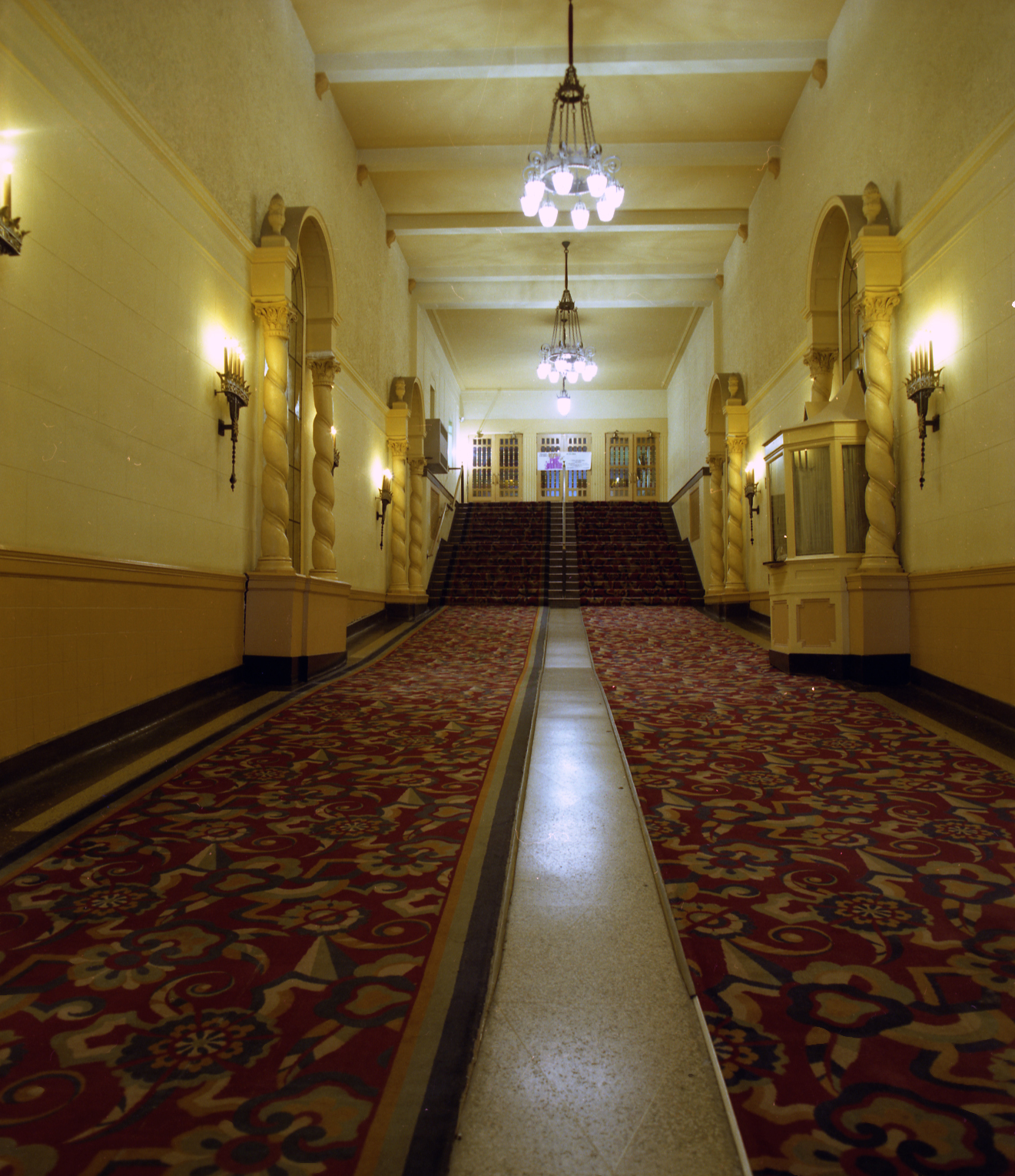
SHELDON YUZIK (moviegoer): I remember literally jumping over those steps after a Bruce Lee movie.
The Second Avenue entrance and hallway led patrons over the alley and upstairs to the rest of the theatre. Patrons then made their way to other parts of the theatre like the candy bar...
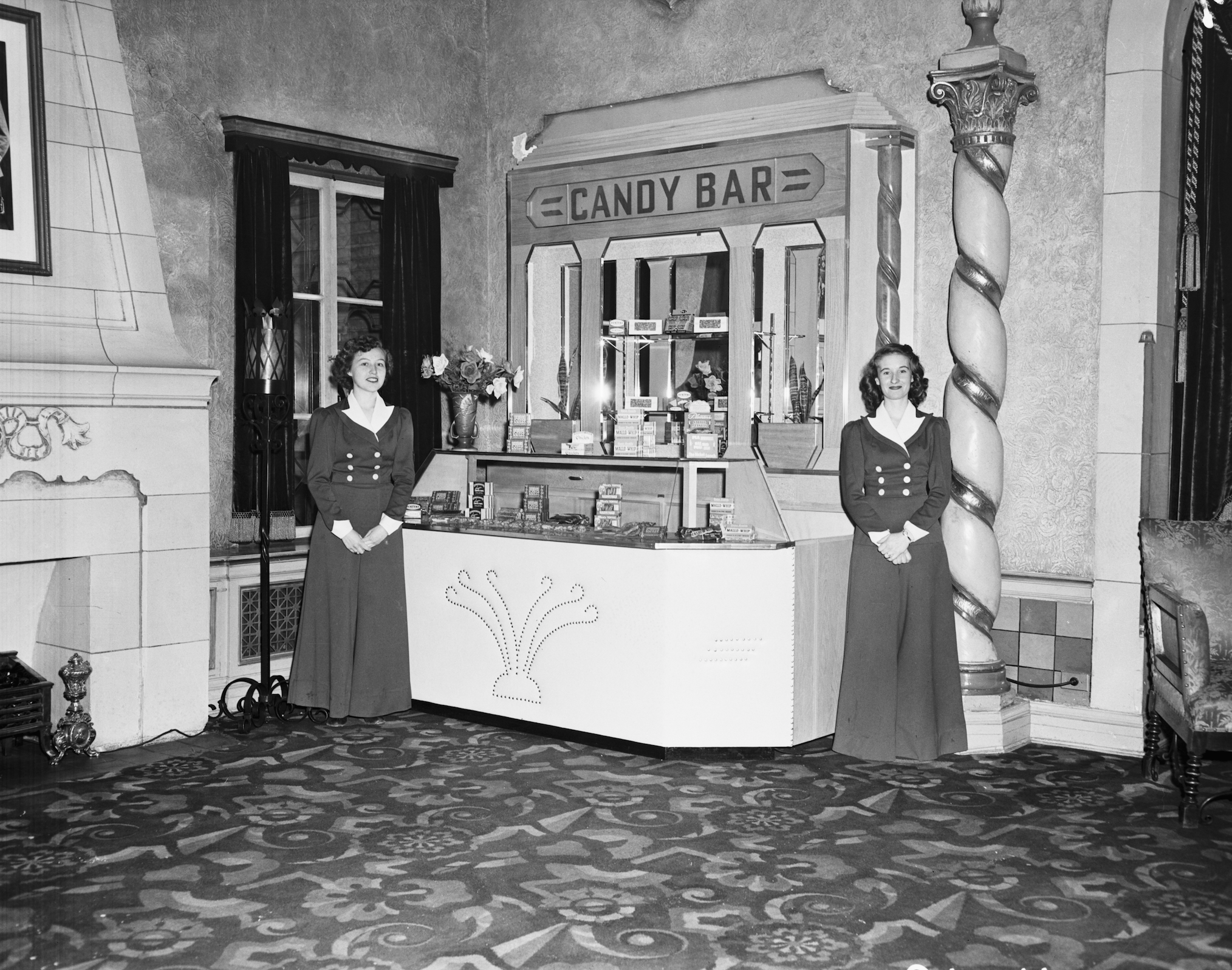
...the lobby hallway leading to the upper balcony or “loges”...
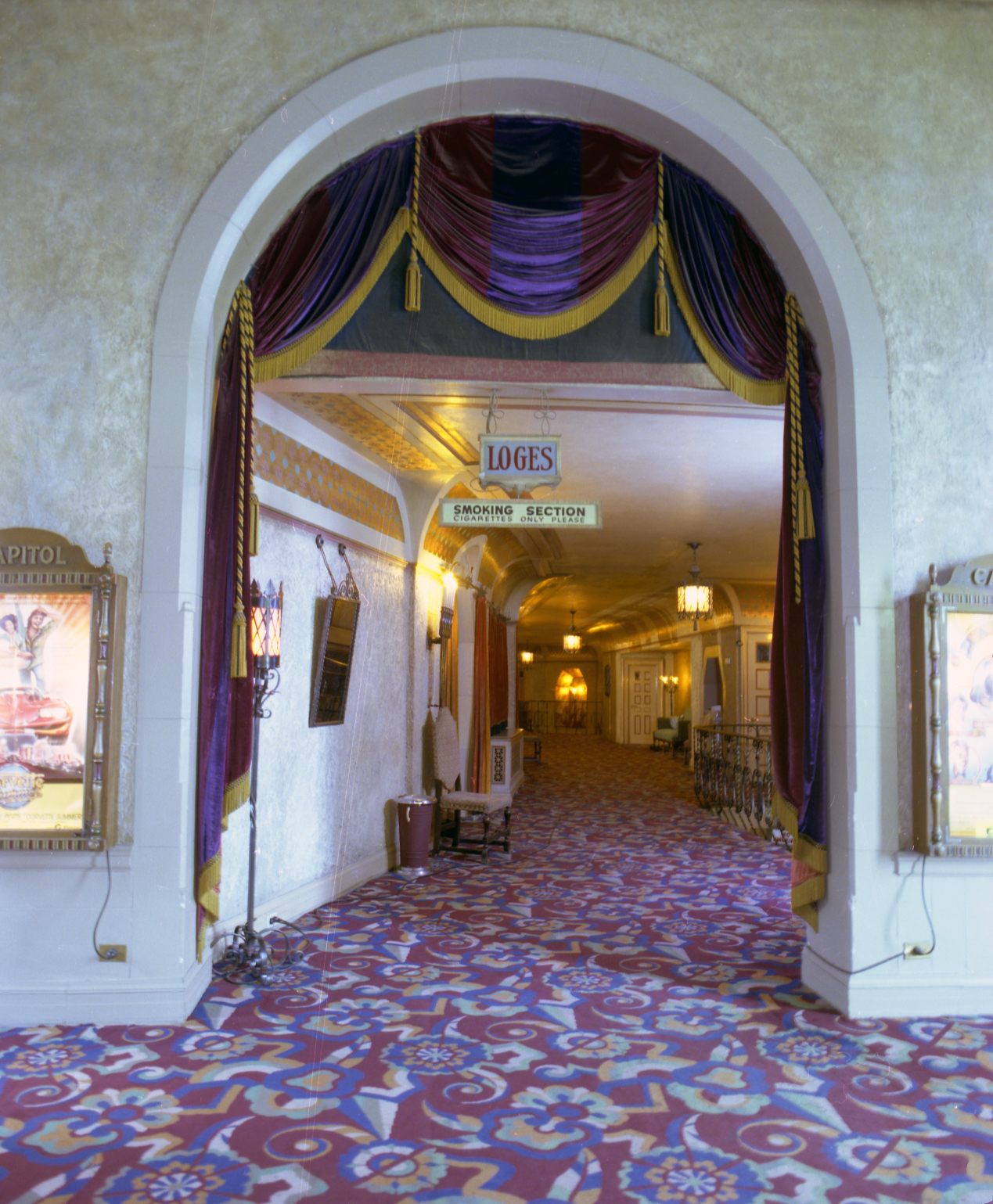
...and the auditorium, its ceiling speckled with painted stars.
JAMES TAYLOR (moviegoer): As if you were in a courtyard surrounded by a castle.
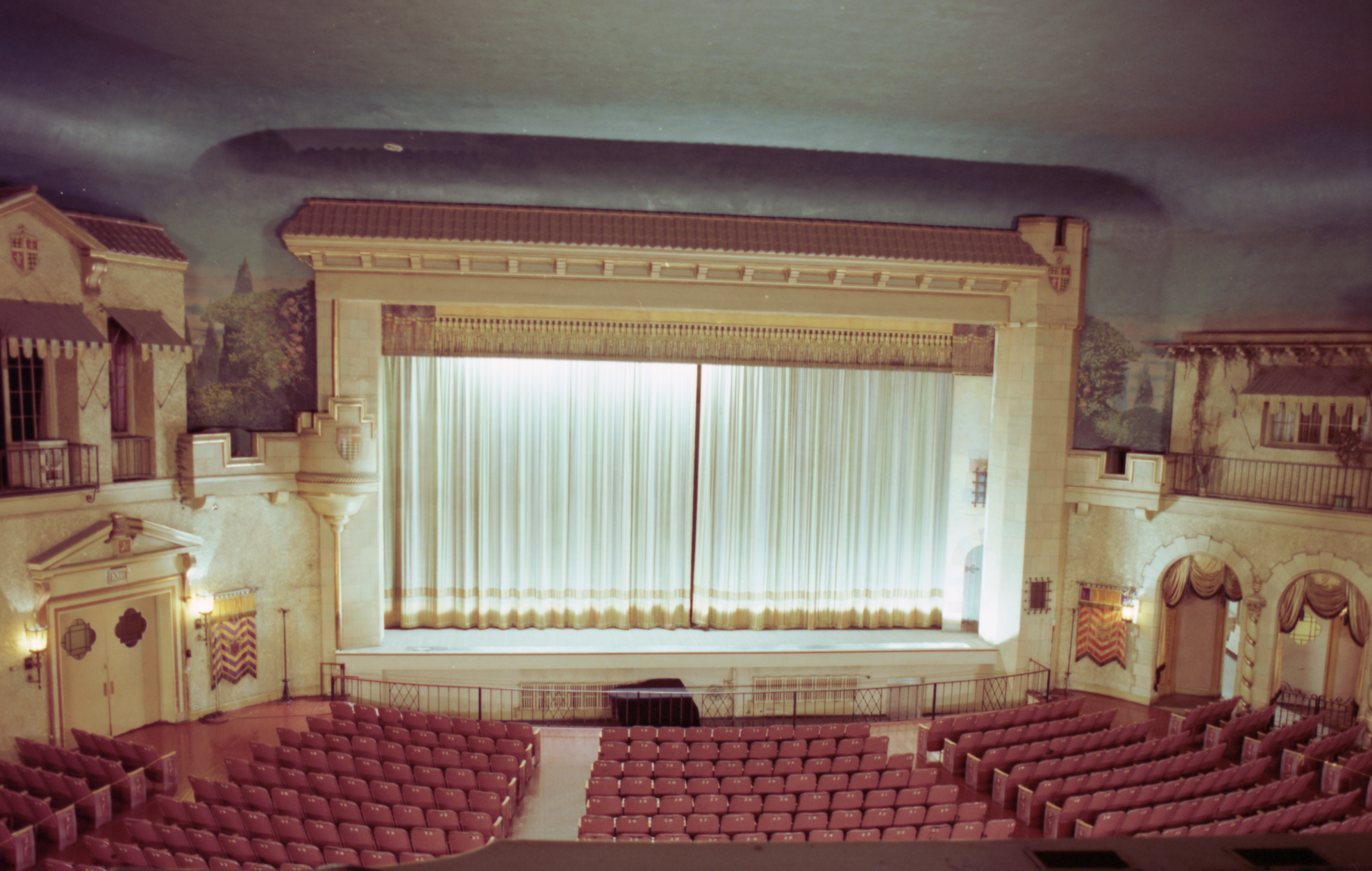
JACK BYERS (Capitol shareholder): You’d never reproduce it today.
CLIFF WRIGHT (Saskatoon mayor, 1976-1988): I leaned my head back up and looked at the stars.
CLINTON BURLOCK (Capitol staffer, 1970-1979): And the cloud machine.

CLINTON BURLOCK: I saw it once. It would work for about five seconds, off a strobe light-type system. You had clouds painted on the ceiling. The strobe light would weave across the ceiling and give you the effect of the clouds just floating on by. After a while they got to fade.

THEA SMITH (moviegoer): My mom was a smoker so we sat [in the loges]. I thought it was very posh to be with the grown-ups.
SYLVIA PLEDGE (moviegoer): A very romantic place to be.
DAVID ENS (moviegoer): The Capitol felt classy even if the movie was rubbish.
JOAN HAMPTON (moviegoer): Everybody dressed up.
JAMES TAYLOR: To quote my mother: “Let’s get all dolled up and go down and see a movie at the Capitol.”

KEVIN HOLDSTOCK (Capitol doorman): One lady patron came storming up from downstairs, covered with Pepsi to her waist. Someone in the loges had put a drink on the railing of the loges and knocked it over. The theatre paid for her dry cleaning.
DON KERR (preservationist): If you think of how flat and how bare many parts of Saskatchewan are, the Capitol was the antithesis. Part of its pleasure was that something so elaborate had been created in what was then a relatively small city [of about 45,000 people].
[Watch below: rare colour video footage taken inside the Capitol.]
The theatre was built when sound films began to edge out vaudeville stage acts. Still, the Capitol was decked out with a large platform and backstage area, making it a cultural hive for Saskatoon.
BARNEY KUTZ (orchestra pit member): It was a huge stage, with a fly gallery — a place where, instead of the scenery being taken off the stage, it’s flown up and taken away above the stage.
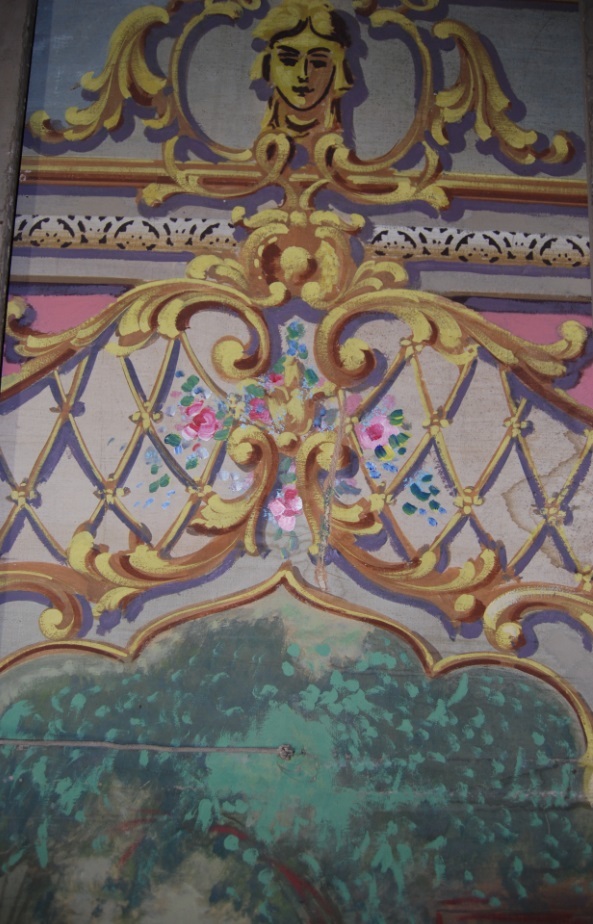
ROBERT HINITT (teacher, drama producer): The dressing rooms had flights of tenement-like stairs coming down to the stage. The iron railings were very Tennessee Williams.
THOMAS CALDWELL (moviegoer): The operettas were sizeable productions, with choruses and orchestras. It was a shock to see how many people were involved.
JACK BYERS (Capitol shareholder): I remember one soprano going out on stage. She got about eight feet out and her slip started coming down so she tripped back off stage again.
JAMES TAYLOR: A show like the Quaker Oats Orchestra concerts was a big deal. There was no television.

HALLY MCKAY (moviegoer): In the spring of each year there was a four-day cooking school. Things were cooked right on the stage. You would go out and try the recipe, but things never did turn out like at the session.
KEN ACHS (Saskatoon developer): My dad worked at the Intercontinental Meat Packers plant, a huge employer in the city. The owner would rent the Capitol for a Christmas party and have Santa Claus on stage and all the kids would come there to receive a Christmas present.
The movies were always the main attraction, though. As Saskatoon’s premier first-run theatre, the Capitol had dibs on all the greats, from early classics such as Gone With The Wind to later blockbusters like Jaws.
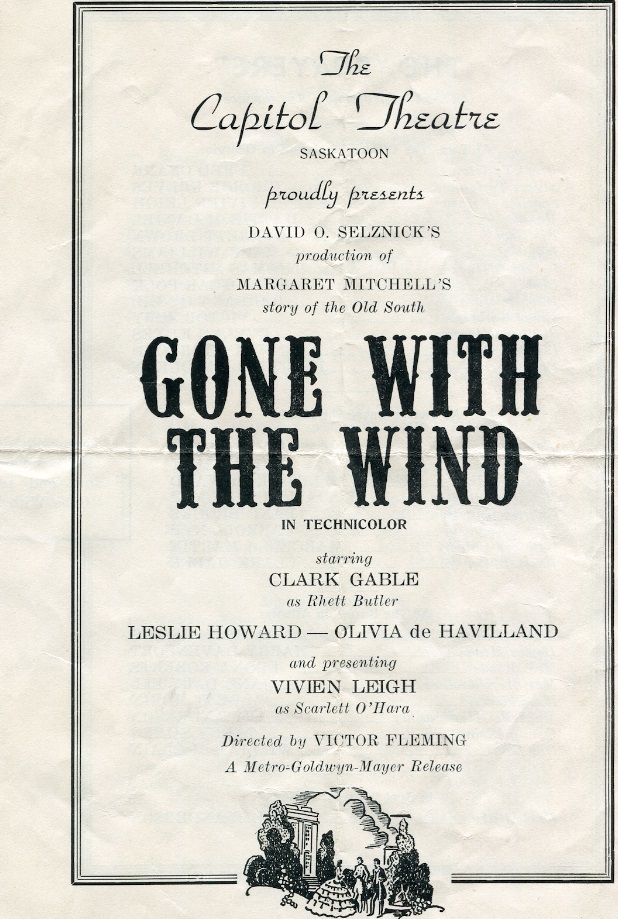
WILBUR LEPP (moviegoer): The Capitol was preferred to the other theatres. Theatres later became very functional and didn’t have that element that the Capitol had.
MOLLY NICHOL (moviegoer): My parents took me to see Mary Poppins in 1964. When it was over, “God Save the Queen” was played.
DAVE EDWARDS (architect with Capitol doors leading to his office boardroom): Sometimes we'd sneak away on a Tuesday afternoon if we could, without our parents finding out, take our 50 cents and go down and watch the James Bond movie that was on. Try to get home before suppertime.

DON KERR (preservationist): My first memory there would be going to see Bambi, which absolutely terrified me. I probably didn’t go back for 10 years.
DARREN HILL (city councillor): My Aunty Margo took me to see Jaws in 1975. I was seven. I clearly remember being scared to go to the washroom at the theatre because I thought the shark would come out of the plumbing and get me!
By the Capitol’s final decade, real-life creatures began creeping into the theatre.
CLINTON BURLOCK (Capitol staffer, 1970-1979): Bats and mice. That was the main problem at the Capitol.
One guy bought a box of popcorn and brought it back. A little mouse had crawled in. He didn’t raise a fuss or anything. He just asked for more popcorn.
CLINTON BURLOCK: Just before we closed we had one bat that used to attack the cleaning ladies.
MARGARET SYKES (Capitol cleaning lady): All of a sudden, off this dark carpet, something came zooming right at us.
[Listen below: the bats that haunted the Capitol.]
CLINTON BURLOCK: Walls were starting to crumble downstairs. The plumbing was shot. The roof was in really bad need of repair. If it was raining outside, it was raining inside [the manager's office].
MARGARET SYKES: When you put the [theatre] house lights on, it was just dull and grey with dust.
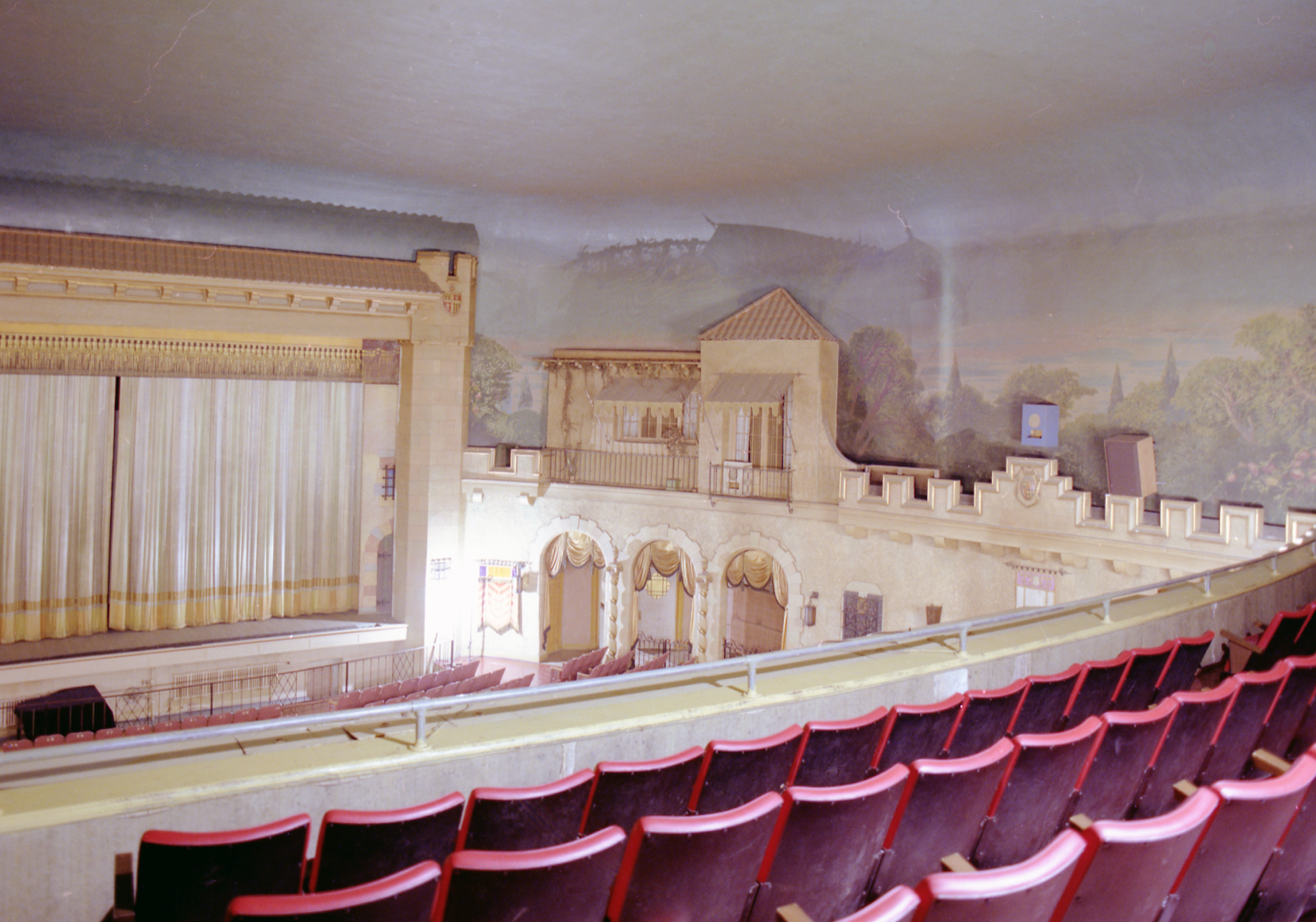
The theatre’s physical decline mirrored the gradual shrinking of its audience over the years. Television was the first big threat, prompting the Capitol to fight back with a widescreen “Cinerama” screen in the early 1950s.
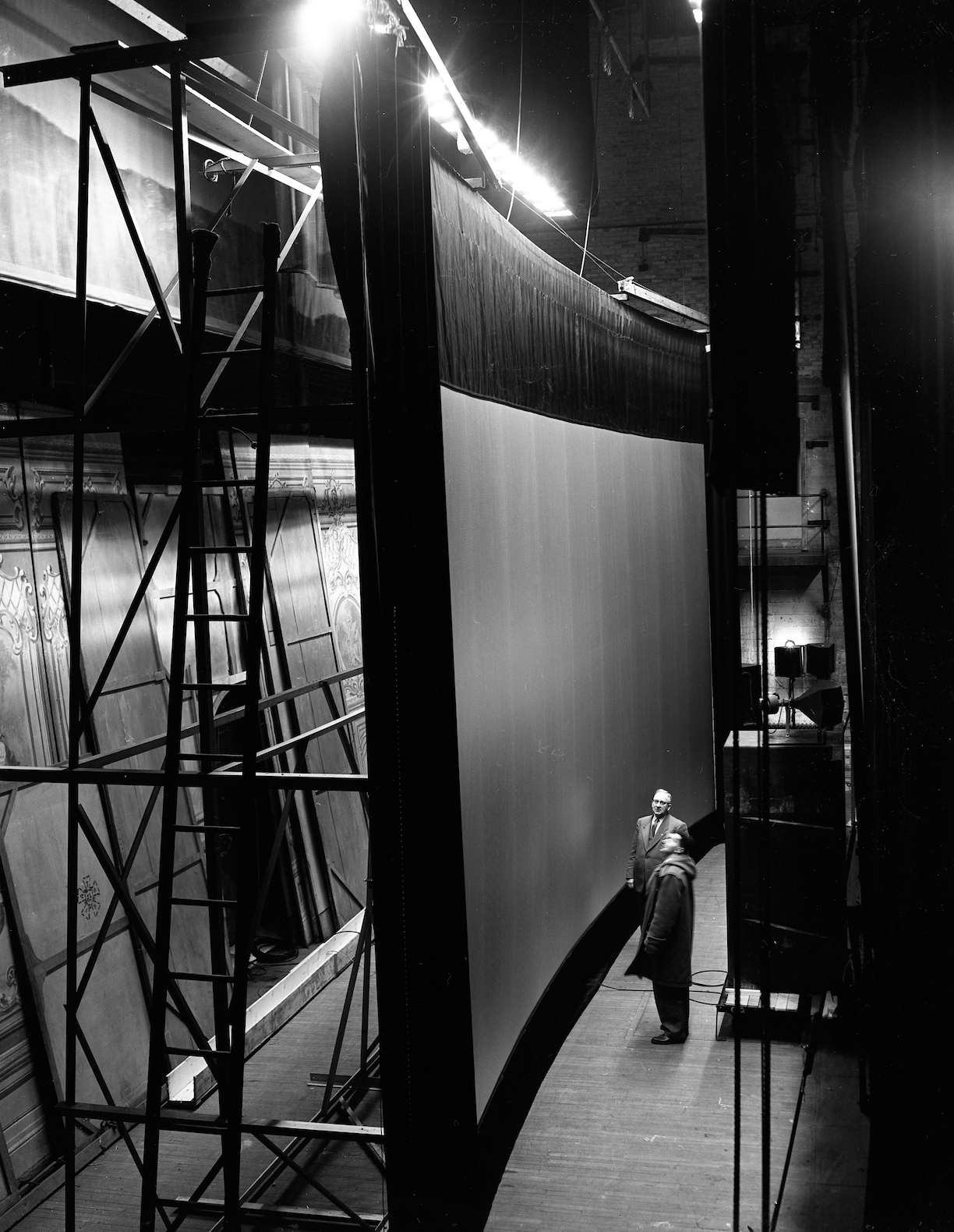
TCU Place came in the late 1960s, which siphoned off attractions like concerts. Then there were newer, stripped-down movie theatres. When Star Wars premiered in 1977, it bypassed The Cap, which instead got Orca, a Jaws knockoff.
JACK BYERS: (Capitol shareholder): It’s just a sign of the times. It was too big a theatre to operate economically.
CLINTON BURLOCK: I think the last time we filled [the Capitol] was The Longest Yard.
REG PLUMB (Capitol manager, 1929-1978): I nearly got out of the business at the right time.

REG PLUMB: I had problems towards the [end]. Once in a while [we’d get] marijuana smokers. You’d get so the police would come down. Drinking was another problem, too.
The last few years, they made pictures that I detest. The language and the violence just went against my grain.
[Listen below: Plumb on that time Pinkerton enforcers were hired to crack down on striking projectionists who lobbed stink bombs to sabotage the theatre.]
CLINTON BURLOCK: We used to find pornographic books once in a while, depending on the type of show we were playing. Usually shows like Last Tango in Paris. We used to lock [the books] away in a drawer. Nobody ever came to claim them.

REG PLUMB: Very often I was ashamed to stand out and meet the public.
It didn't go on much longer. By 1978, the largest threat yet was looming over the city’s favourite movie house: the wrecking ball.
Why was the beautiful Cap demolished? And who wielded the wrecking ball? Click here to find out in Act 2, "Save The Cap."
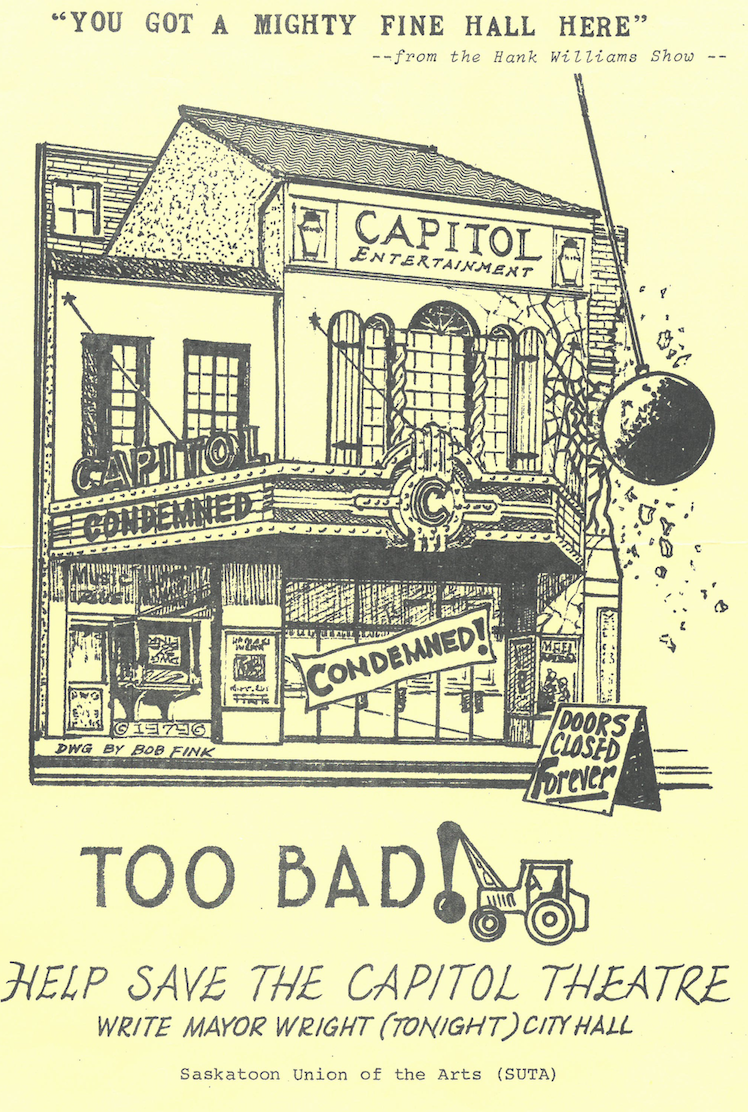
Listen below to a short radio documentary version of Act 1 - "Glory Days."
